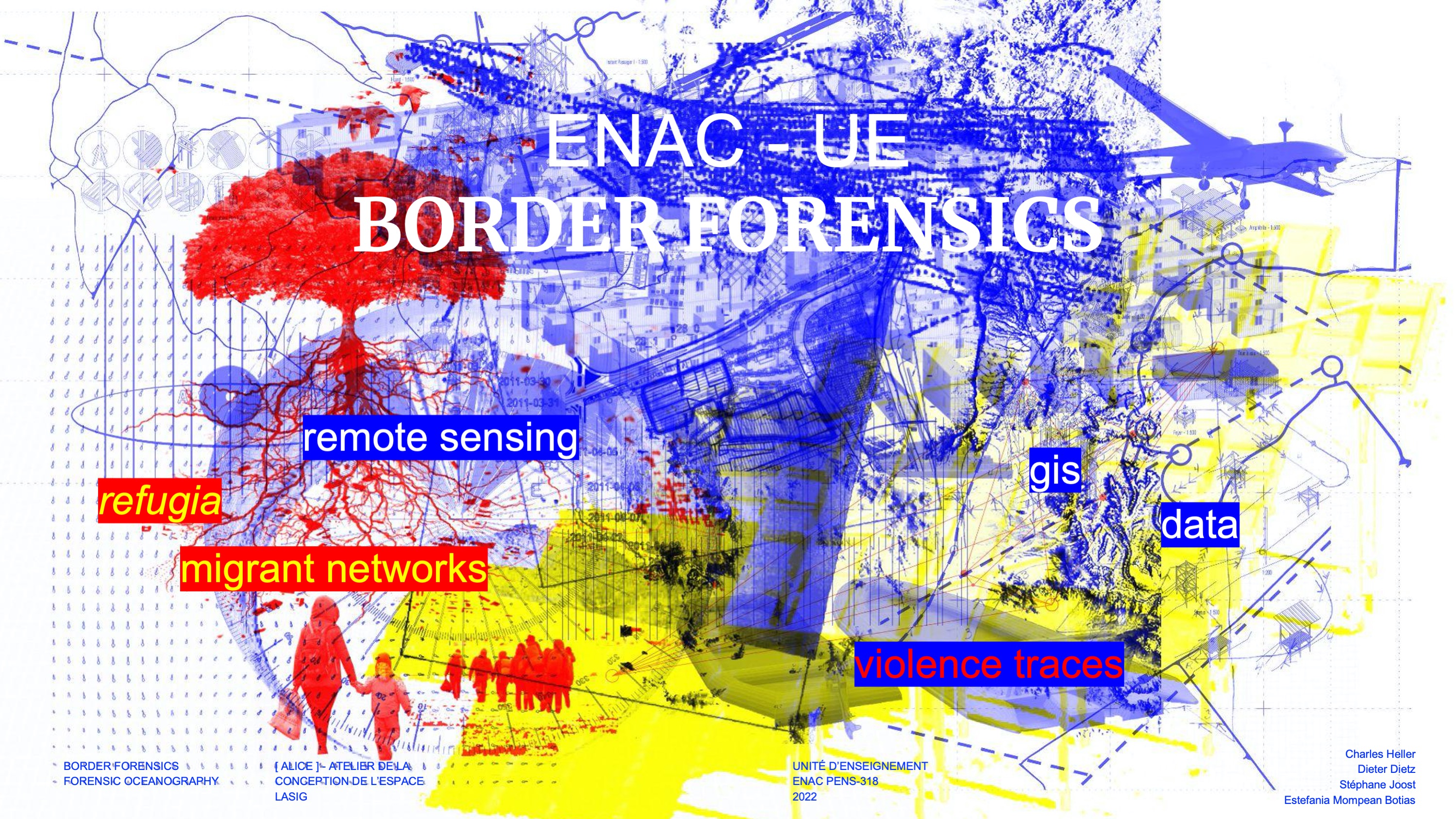
The idyllic landscape of Switzerland is striated by multiple borders and social boundaries, which may affect particularly asylum seekers as well as negatively racialized citizens. This course will introduce students to scientific and spatial methods allowing to document, contest, mitigate and transform the forms of harm affecting migrants and racialized subjects by working practically on investigating specific situations in Switzerland. In particular, we will explore the forms of harm that can be inflicted on asylum seekers in an indirect way through the Swiss Asylum Dispositif (Panese 2022). The laws, administrative measures, bureaucratic practices and infrastructures that make up the Swiss asylum dispositif and are mobilised with the aim of selecting people and controlling migratory flux transport and translate borders within the State, "into the middle of political space" (Balibar 2004, 109), along with their "potential for violence" (Panese 2022, 18). The impact of borders and systems of migration management can inflict psychological and physical harm. We will further explore the subject at three distinct but interconnected levels: the territory, the architecture and the body. Through these levels of research, we will explore the broader theme of how borders and social boundaries materialize in urban environments, to what extent they can impact people’s relation to those spaces and their bodies and the ways in which they can be transformed to offer different potentialities. The course is divided into two main parts. The first part offers a theoretical and methodological introduction to border violence, the Swiss asylum dispositif and its documentation. We will examine the use of forensic techniques to make traces of different forms of violence emerge and present them in various forums. We will focus specifically on the research conducted within the Forensic Oceanography and Border Forensics projects. The second and main part of the course will bring students to focus on specific manifestations of borders and social boundaries across the territory of Switzerland, and the way they affect the lives of asylum seekers as well as negatively racialized citizens. Students will experiment new tools and approaches towards spatial analysis and transformation as well as visual ethnography techniques. While there will be common sessions for all students, students will also be able to form smaller clusters and focus on particular sites and levels of analysis and emphasize one or the other dimensions of spatial analysis and spatial transformation.
The course will allow students to address a wide range of questions such as: how can we understand and register violence in its many different guises? How does the violence of borders and social boundaries operate and how are geophysical environments harnessed within it – including the urban space itself ? How can we navigate complex regimes of (in)visibility, in which deaths can be hidden but also spectacularised? What is the politics of different technologies and methods used to reconstruct cases of violence? How can spatial interventions articulate places of (in)visibility, resistance, coordination and memory? Can these interconnected places become places that question the very process of the city and the built environment? How might infrastructures and systems of migration management be transformed so as to mitigate the suffering they generate ?
By exploring these questions, the course will equip students with the conceptual tools to navigate the complexities of research-based spatial practice.
- Professor: Martí Bosch Padros
- Professor: Dieter Dietz
- Professor: Nathalie Fanzy
- Professor: Stéphane Joost
- Professor: Mathias Lerch
- Professor: Estefania Mompean Botias
- Professor: Elio Panese
- Professor: Sanja Platisa
- Professor: Marie Hannah Florence Trossat